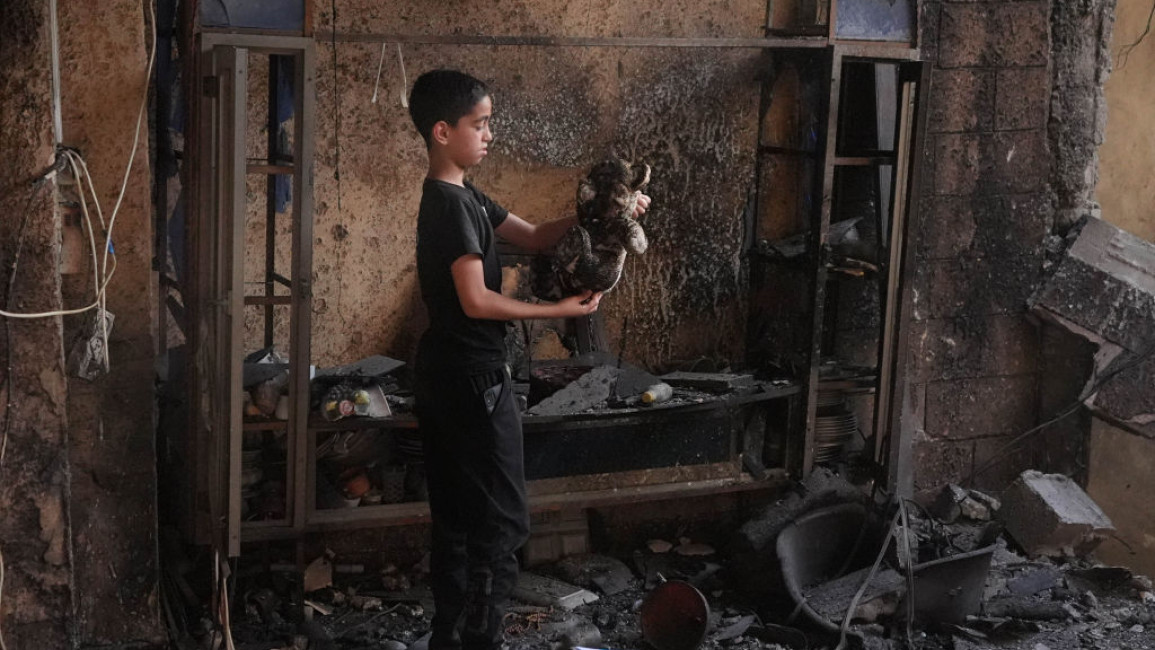
Why Israel launched one of its biggest assaults on the West Bank
On 28 August, the Israeli army launched ‘Operation Summer Camps’, with a large-scale and extremely violent assault Palestinian towns, cities, and refugee camps in the northern occupied West Bank. Since then, in Tulkarm, Jenin, Tubas, and other towns and camps, Israeli occupation forces have killed close to 50 Palestinians – including elderly residents and children, as well as local fighters.
The operation is, in theory, open-ended – and thus far characterised by withdrawals of forces from a particular town, only for the army to return some days later. Airstrikes, the bulldozing of civilian infrastructures, checkpoints and blockades, and the widespread use of live fire, all characterise an offensive the likes of which has not been seen since the Second Intifada.
So why has Israel pursued such an intense escalation? Israel’s line, both for domestic and international audiences, is that the operation is a campaign against ‘terrorist’ groups who are supposedly an Iranian-front. In fact, Israel’s escalation is inseparable from the broader goals of the government and settler movement in the West Bank, especially its northern governorates.
Expanding settlements
Since last October, across the West Bank, some two dozen ‘outposts’ have been established – technically unauthorised settlements nonetheless created and maintained with the support of Israeli authorities. Another 70 outposts were recognised as eligible for government funding, while five other outposts were formally recognised as official (i.e. new) settlements in a cabinet decision.
Thousands of housing units were advanced in settlements, and some 25,000 dunums of land were expropriated by Israeli occupation authorities as ‘state land’. And, strikingly, Israeli defence minister Yoav Gallant, in May advanced a process that could see settlers returning to four colonies dismantled in 2005 near Jenin as well as between Jenin and Nablus.
This significant expansion of settlements, both actual and planned, is occurring in parallel to both a surge in attacks by settlers on Palestinian communities and an increasing amount of weaponry in the hands of settlers (in part, thanks to efforts by national security minister Itamar Ben-Gvir).
The above is a partial summary of developments just since 7 October, but they follow on trajectories which go much further back. For example, between 1996 and 2013, some 46 ‘outposts’ were established in the Nablus governorate alone. More recently, months before 7 October, in the first half of 2023, the Israeli government promoted a record number of housing units in West Bank settlements, and, retroactively formalised the status of a record number of outposts.
In August 2023, the head of the settlers’ ‘Samaria Regional Council’ – an area covering a swathe of the northern West Bank, including Nablus, Jenin, and Tulkarm – Yossi Dagan, wrote to prime minister Benjamin Netanyahu with a plan backed by “hundreds” of settler leaders to have one million settlers in his region by 2050. This would include at least 25 settlement “cities” in the northern West Bank.
Palestinian resistance
Accomplishing such a goal, or even advancing the settlement expansion already underway, is complicated by any forms of Palestinian resistance to such a project – including that of armed groups which have emerged over the last 2-3 years in cities and camps in the northern West Bank. Such groups have been particularly strong in the region’s refugee camps, longstanding spaces and incubators of political mobilisation and national identity.
The expansion of settlements and measures of annexation are both factors in the re-emergence and growth of Palestinian armed groups in the northern West Bank and, at the same time, necessitate the targeting and dismantling (or so Israel hopes) of those very same groups. And more broadly in this context, in Israel’s crosshairs are any expressions or means of Palestinian national identity and collective expression – hence the huge amount of destruction in refugee camps, and the ongoing efforts to undermine the existence of UNRWA in both Gaza and the West Bank.
It is not just the northern West Bank, of course. A new settlement – to be created entirely from scratch – is planned near Bethlehem, while in both the Jordan Valley and Southern Hebron Hills settlements grow and outposts spring up. In those latter two areas, large-scale expulsions of Palestinians have also been taking place – targeting smaller, more vulnerable Palestinian communities. This shows that it is not even resistance per se that constitutes an obstacle to the settlement-annexation drive, but the presence of Palestinians full stop.
Thus, the wave of destructive and deadly raids in the northern governorates is ultimately inseparable from Israel’s wider designs in the West Bank, namely, ever-growing settlements and annexation. In 2017, the now Finance Minister and minister within the defence ministry, Bezalel Smotrich, laid out a plan for the West Bank where its Palestinian residents would have three alternatives: accept their lot in a Jewish state, emigrate, or, be killed refusing those two options. As annexation advances, the residents of Jenin and Nour Shams refugee camps, or the families in Masafer Yatta, are experiencing what many fear will be coming to everyone in the West Bank sooner or later.
Ben White is a writer, analyst, and author of four books, including ‘Cracks in the Wall: Beyond Apartheid in Palestine/Israel’.
Follow him on X: @benabyad
Have questions or comments? Email us at: editorial-english@newarab.com
Opinions expressed in this article remain those of the author and do not necessarily represent those of The New Arab, its editorial board or staff.




 Follow the Middle East's top stories in English at The New Arab on Google News
Follow the Middle East's top stories in English at The New Arab on Google News


